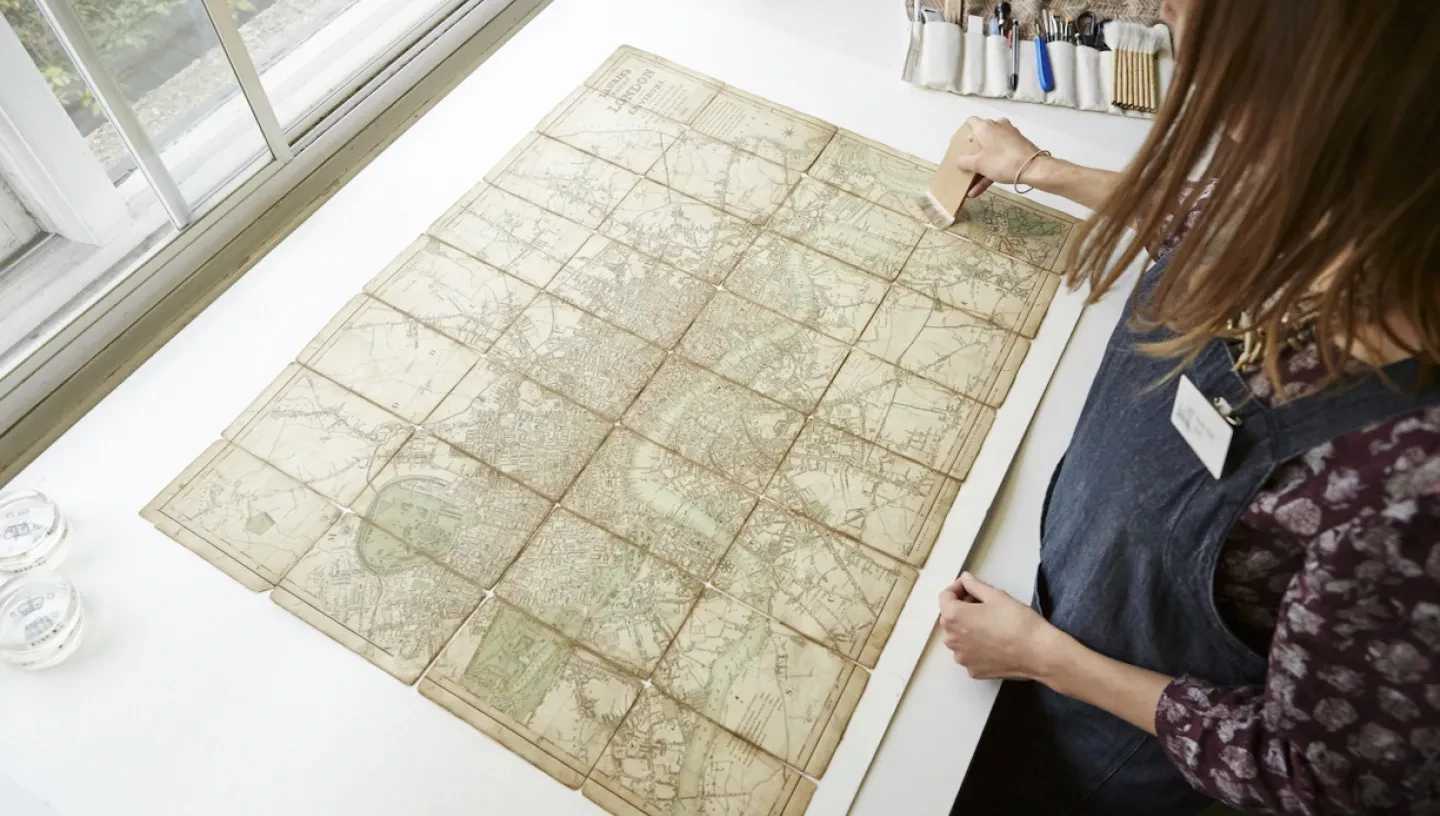
Objects from our collections travel all over the world, so that they can be seen by new audiences who may not have the opportunity to visit Greenwich.
We loan objects to international and national exhibitions. Conservators need to check that an object is safe to travel, and if not, they will set to work to make sure that it is. While the conservators are at work on the object, specialist mount makers will design a mount to make sure that the object is held in the optimum position on display.
Making our stores accessible
We work to make our stores and archives accessible. Archival materials can be ordered in our library by researchers wishing to identify a seafaring relative from our naval records. Paper conservators might have been involved in dusting the pages, repairing torn page corners, or fixing loose pages back into place, before putting the volume in a made to measure box or wrapper.
An early 19th century map of London (pictured) was too vulnerable to be handled and so could not be accessed from our archives. A paper conservator will dust the surface prior to working on the paper structure to make it safe for handling and archive retrieval.
Accessing items online
Paper conservators also work on archive materials that have been requested for digitisation. Large numbers of our records can now be searched online. Prior to digitisation, pages will have been cleaned so that the text is legible, and repairs made so that the pages or bound volumes can be handled for the digitising process. All studios can be involved in digitisation projects, which also include photographing our collections for the online catalogue. We make objects safe for photography, and give them a once-over so they are ready for their close-up.